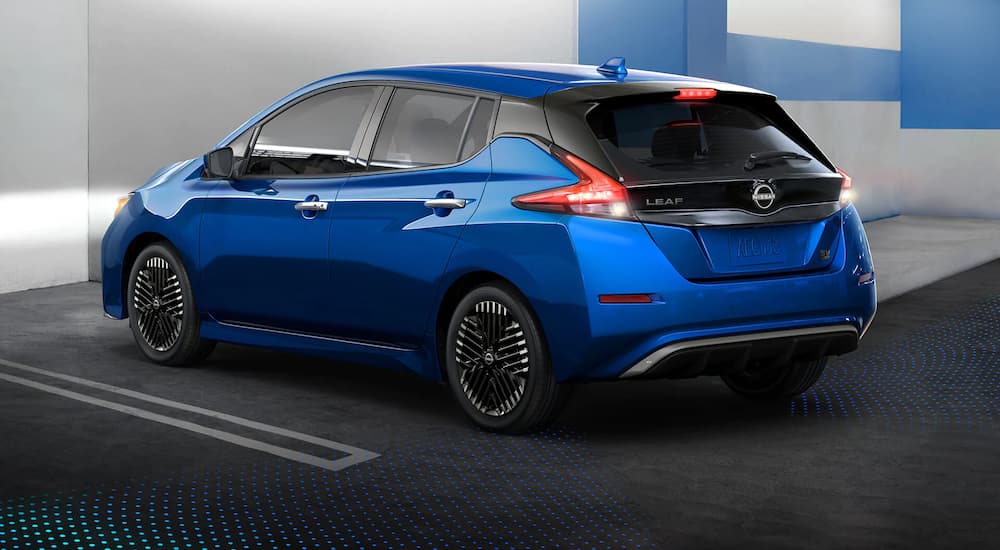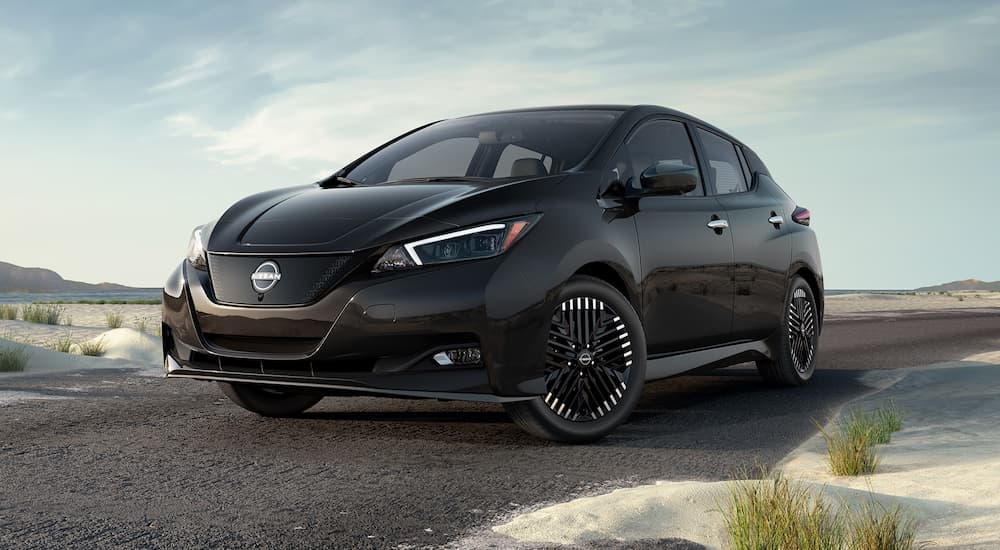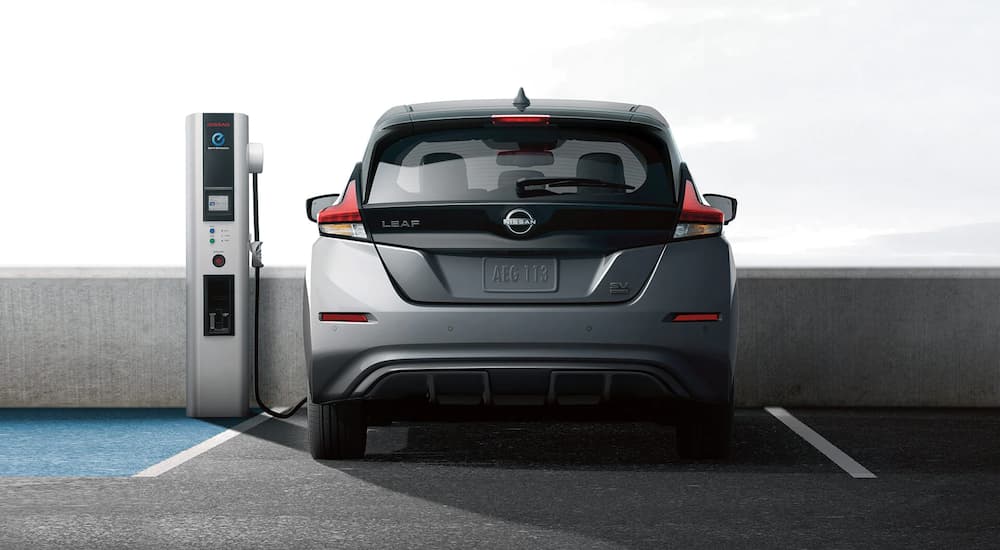When I think of the advent of electric vehicles and the impact it has had on the automotive industry, my mind instantly wanders to the idea that vehicles are simply no more than computers on wheels. I’m not discussing the electric powertrain either, mind you–I’d like to discuss how modern-day electric vehicles, such as the 2023 Nissan LEAF, utilize their technological capabilities for more than their powertrain. More specifically, Nissan in particular produces some of the safest vehicles money can purchase, thanks in large part to the technological prowess of their vehicles. The Nissan LEAF may be technologically fascinating like its other EV brethren, but where the future in automobiles truly lies is in keeping drivers safe.
How do Nissan vehicles such as the LEAF go about keeping drivers safe? For starters, the Nissan LEAF comes standard with Nissan Safety Shield 360, which is one of the most feature-rich safety suites available to base-level vehicles. The Safety Shield 360 suite includes six features–each designed to keep your vehicle void of any collisions. Additionally, Nissan allows LEAF drivers to opt for the ProPILOT Assist package, which furthers the arrangement of safety features with a couple more enhancements, as well as three additional safety features drivers can look into from there. Ultimately, the LEAF is one of the most intelligent vehicles on the market, which is easily seen through features such as Driver Alertness, and the Around View Monitor, among others. Let’s get started, shall we?

The Nissan Safety Shield 360 Has You Covered
Nissan deserves praise for including such a competent safety suite in vehicles such as the LEAF at no additional cost. Other manufacturers with competing models have begun to do something similar, but Nissan’s suite appears to be far more complete–helping drivers avoid collisions with vehicles and pedestrians and offering up a host of automated features, such as alert systems and High Beam Assist which automatically changes the brightness of your high beams depending on road conditions and oncoming drivers.
Aside from automatically adjusting the brightness of the high beams, the LEAF also includes Automatic Emergency Braking with Pedestrian Detection and Rear Automatic Braking. This feature is a large selling point of the Nissan Safety Shield 360 safety suite. Other manufacturers tend to offer a similar type of feature, but it’s not always guaranteed to come standard with the purchase, so Nissan deserves a bit of praise for this.
Automatic Emergency Braking has two parts to it. Firstly, if your vehicle is encroaching on another vehicle too quickly, the LEAF will first omit a warning alert, essentially telling the driver to apply the brakes to avoid a collision. The warning is precautionary because if the driver doesn’t react to the warning, the vehicle will then hit the brakes and bring the vehicle to a stop. Will this prevent a collision entirely? It’s not guaranteed, but it can at least ensure the impact isn’t as severe as it could have been without any braking pressure applied. And, with the addition of pedestrian detection, the LEAF is intelligent enough to tell when a bystander may be in the direct path of your vehicle, and the same series of events will unfold from the alert to the autonomous braking.
Another automated safety feature for the 2023 LEAF is Rear Automatic Braking which utilizes data provided by the rear-view camera feed. If you’re reversing your vehicle into, say a parking space, the brakes will automatically apply if the vehicle detects an imminent collision with an object. However, that’s for parking. What if you were to reverse out of a parking space? While there is no automated braking system for reversing the LEAF out of a parking space, Rear Cross Traffic Alert is the next best thing as it uses the same rear-view camera to detect if vehicles are coming from either side while the vehicle is in reverse. Thanks to Rear Cross Traffic Alert, you’ll have an extra pair of eyes with you at all times when you’re reversing out of a spot into a busy parking lot.
The features associated with Safety Shield 360 don’t end there. With Safety Shield 360, owners of vehicles such as the LEAF also get a Blind Spot Warning and Lane Departure Warning, the former of which is rarely seen on a standard safety suite. Freeway travel is an unfortunate part of daily life unless you’re one of the few who find it oddly cathartic. A Blind Spot Warning doesn’t need much of an introduction–if a vehicle is approaching your blind spot, you’ll see a glowing symbol on the mirror corresponding with which side the other vehicle is on. For example, if your left blind spot is clogged, the symbol will appear on the left mirror, and vice versa for the right side. It’s always important to stay vigilant when changing lanes, but having an indicator to glance over at can go a long way towards making the driving process safer. Safety Shield 360 also includes a Lane Departure Warning, which warns you if you’re entering the wrong lane if you haven’t signaled, which can be tremendously helpful if there’s a vehicle in your blind spot.
Even More Enhanced Features
Aside from the Nissan Safety Shield 360 safety suite, there are a few additional features that can make the experience far safer, and they do that by adding intelligent functionalities, sometimes to pre-existing features. For example, the Intelligent Forward Collision Warning is similar to the collision warnings you may have experienced in the past, but what makes this one much better is its ability to survey two vehicles ahead of the LEAF, not just one. The LEAF can tell when the brakes will most likely need to be applied by utilizing speed data captured by both of the vehicles in front of the LEAF, which undoubtedly requires some intelligent processing power on the vehicle’s end.
Secondly, if the aforementioned Lane Departure Warning notices the LEAF isn’t staying in its lane, the Intelligent Lane Intervention can provide subtle input to ensure the vehicle doesn’t cross the line. However, if you’re intentionally seeking to switch lanes, the vehicle will know this too, and if there’s a vehicle in the blind spot where you’re trying to turn, the Intelligent Blind Spot Intervention will apply braking input to ensure you don’t make contact with another vehicle.
The Nissan LEAF also includes the aforementioned Intelligent Around View Monitor, which uses the LEAF’s available cameras located around the exterior to create an array of camera viewpoints to select between, which can go a long way in maneuverability. The LEAF also includes what’s known as Intelligent Driver Alertness, which will warn the driver that they should consider taking a break from driving until they’re better rested, and it does this by detecting the types of behaviors that dozing drivers seem to experience, such as less precise steering. While drivers know better than to operate a vehicle when they’re tired–the reality is that it happens, and sometimes a simple reminder to caffeinate or get some rest can do wonders to make your car ride safe.
The Intelligent Difference
For as much time as we spend driving, it’s comforting to know our vehicles are designed with our safety in mind. The Nissan LEAF and its extensive suite of standard safety features set the bar for driver safety. With each mile driven, drivers can be at ease knowing their car has their back.





